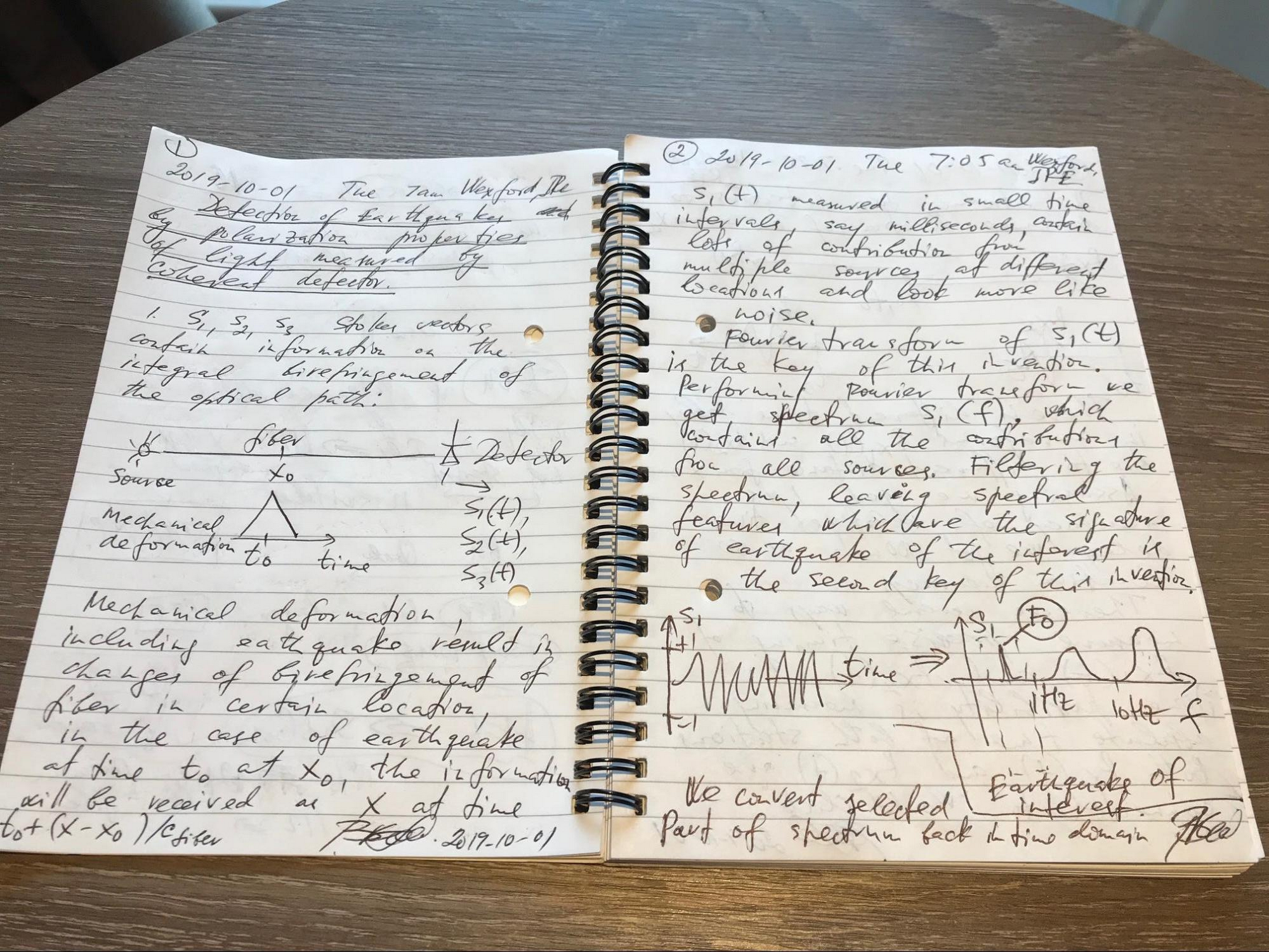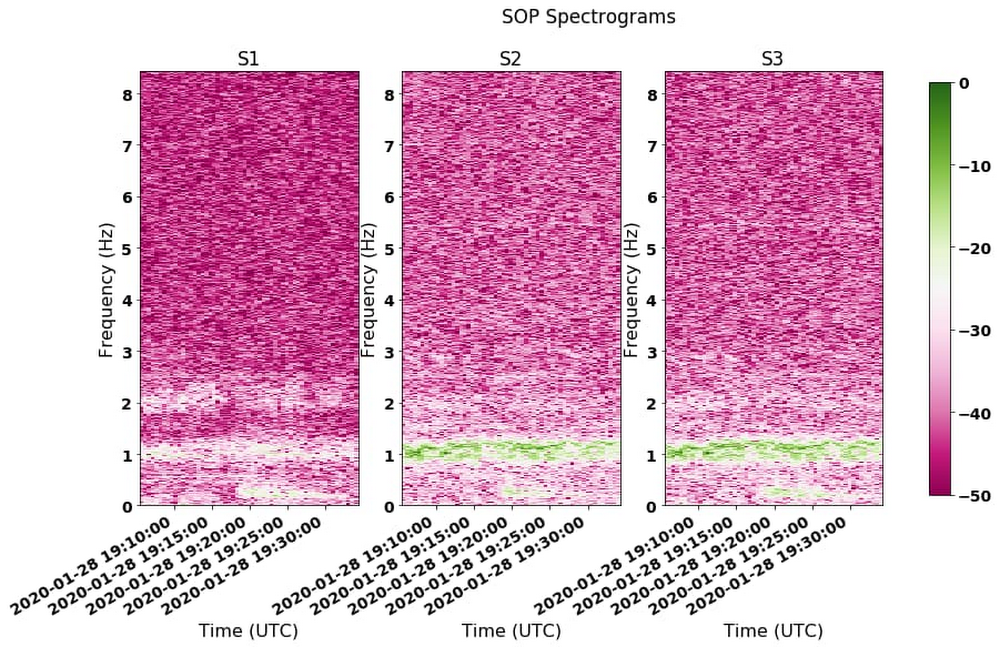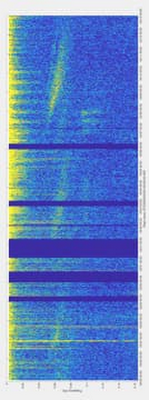What’s shaking? Earthquake detection with submarine cables
Valey Kamalov
Google Global Networking
Mattia Cantono
Network Architect, Optical, Google Cloud
Is it possible to detect earthquakes with submarine cables? We think it might be. A recent experiment using one of our subsea fiber optic cables showed that it could be useful for earthquake and tsunami warning systems around the globe.
There’s a long tradition of using optical fiber for sensing applications. But whereas most of these techniques are effective over distances of up to 100 km, we’ve developed a technique that works over tens of thousands of kilometers. And while previous approaches require special sensing fiber and special equipment, we use existing fiber to detect disturbances on the seafloor. Better yet, our technique relies on equipment that is present on the vast majority of the world’s existing fiber optic systems, so it is broadly applicable.
Fiber optic cables connect far-flung continents along the ocean floor, and much of the internet’s international traffic travels over these cables. Google’s global network of undersea cables makes it possible to share, search, send, and receive information around the world at the speed of light. These cables are built using optical fibers that carry data as pulses of light traveling at 204,190 kilometers per second. The pulsing light encounters distortions as it travels thousands of kilometers across the cable. At the receiving end, the light pulses are detected, and the distortions are corrected by digital signal processing. One of the properties of light that is tracked as part of the optical transmission is the state of polarization (SOP). The SOP changes in response to mechanical disturbances along the cable and tracking these disturbances enables us to detect seismic activity.
In 2013, we looked at how we might use SOP data to better understand deviations detected on a land-based terrestrial cable, but typical factors in the surrounding environment caused too much disruption to detect seismic signatures, so we didn’t pursue that project further. Then, in 2018, scientists published a paper about early success they had had detecting earthquakes on both terrestrial and subsea links, looking at phase changes using a narrowband ultrastable laser. But the links they used were short (under 535 km for terrestrial and 96 km for subsea) and in relatively shallow waters (~200m deep), limiting practical application of the idea. To be useful, they’d need to try this out on links that were much deeper on the ocean floor and that ran along much greater distances.
We read this paper with great interest, and began thinking about how we might help detect seismic data using subsea cables. Last October, an idea came to us: we could detect earthquakes based on spectral signatures—performing a spectral analysis of Stokes parameters to look at frequencies that are typical of earthquakes.


Early tests
In late 2019, we began monitoring SOP on some of our global submarine cables. During the initial field trial, we observed that SOP was remarkably stable, even after the signal traversed 10,500 km. The ocean floor is mostly a quiet place.
Indeed, for several weeks, the ocean floor was perhaps too quiet, showing no SOP changes that would indicate an earthquake. Then, on January 28, 2020, we detected a magnitude 7.7 earthquake off of Jamaica—1500 km away from the closest point of one of our cables! A plot of SOP over time showed a pronounced spike at a time stamp approximately five minutes after the earthquake occurred, correlating to the travel time of the seismic wave from Jamaica to the cable, and the duration of the spike was about 10 minutes.


We shared our results with Dr. Zhongwen Zhan of the California Institute of Technology Seismological Laboratory, who confirmed our observations and provided additional insight into travel times of different types of seismic waves and the expected frequency ranges of SOP excursions.
In the months following the Jamaica earthquake, we also detected multiple moderate-size earthquakes, both at shorter and longer distances. On March 22, 2020, there was a magnitude 6.1 earthquake on the East Pacific Rise (a mid-oceanic ridge located along the floor of the Pacific Ocean, about 2000 km away from one of our cables). We observed clear SOP activity with timing consistent with observations made at a seismic monitoring station in Tlapa, Mexico, which was located at a similar distance. Then, on March 28, a magnitude 4.5 earthquake occurred off the shore near Valparaiso, Chile, only 30 km away from one of our cables at the closest point. The event produced a clear but short spike of SOP activity—the short duration was likely to due to a rapid decay in the vibration intensity along the cable for this relatively small event.
Augmenting the world’s seismic detection system
We’re excited by the early success of detecting seismic events with subsea cables, which can improve our ability to observe both the Earth’s structure and earthquake dynamics. But this is just the beginning.
For example, by analyzing our data, Dr. Zhan showed us that not only can we detect earthquakes emanating from tectonic plates, but we can also detect pressure changes in the ocean itself, which could help predict tsunamis. This is particularly exciting because today, most tsunami detection equipment is either on shore, or scattered throughout the ocean. The former doesn’t give coastal communities enough time to evacuate, and the latter is limited by the speed of the traveling wave—a maximum of 800 km per hour for a deep sea wave. On the other hand, when a cable runs near the earthquake epicenter, a tsunami warning system that transmits data at the speed of light could communicate a warning to potentially affected communities in milliseconds.


Further, our approach relies on technology that is widespread on today’s fiber optic networks. Millions of kilometers of fibre optic networks already span the globe, operated by governments, telecommunications providers, and technology companies such as ourselves. By collaborating with the global subsea cable community, we may be able to improve the world’s ability to detect and research seismic activity around the world.
Of course, this is just a first demonstration, not a working system, and much work remains to be done. First, scientists will need to better understand the deluge of complex data that will be generated by monitoring SOP. Seismic data is notoriously complex—the waveforms produced by different kinds of earthquakes look very different from one another and those shapes change dramatically based on variables such as magnitude, location, and so on. To create a robust earthquake monitoring system, researchers need advanced mathematics and data analytics, where advanced computing systems like Google Cloud can be instrumental. In time, scientists may decide that this is a job for machine learning, which excels at making sense of large data sets in a way that is beyond the ability of the human brain.
We see this approach not as a replacement of dedicated seismic sensors but as a source of complementary information to enable early warnings for earthquakes and tsunamis. We’re humbled and excited by the possibility of collaborating with the optical, subsea and seismic research communities to use all of our cable infrastructure for greater societal benefits.



